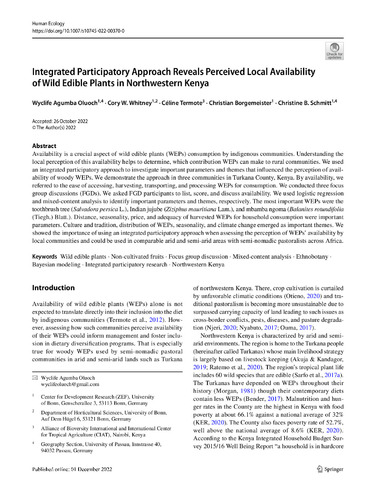Integrated participatory approach reveals perceived local availability of wild edible plants in Northwestern Kenya
Abstract
Availability is a crucial aspect of wild edible plants (WEPs) consumption by indigenous communities. Understanding the local perception of this availability helps to determine, which contribution WEPs can make to rural communities. We used an integrated participatory approach to investigate important parameters and themes that infuenced the perception of availability of woody WEPs. We demonstrate the approach in three communities in Turkana County, Kenya. By availability, we referred to the ease of accessing, harvesting, transporting, and processing WEPs for consumption. We conducted three focus group discussions (FGDs). We asked FGD participants to list, score, and discuss availability. We used logistic regression and mixed-content analysis to identify important parameters and themes, respectively. The most important WEPs were the toothbrush tree (Salvadora persica L.), Indian jujube (Ziziphus mauritiana Lam.), and mbamba ngoma (Balanites rotundifolia (Tiegh.) Blatt.). Distance, seasonality, price, and adequacy of harvested WEPs for household consumption were important parameters. Culture and tradition, distribution of WEPs, seasonality, and climate change emerged as important themes. We showed the importance of using an integrated participatory approach when assessing the perception of WEPs’ availability by local communities and could be used in comparable arid and semi-arid areas with semi-nomadic pastoralists across Africa.

